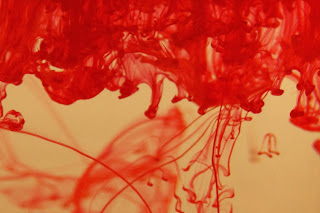The arranging of these composite images involves a lot of experimentation for each piece before a final outcome is decided on- it can be difficult to know whether two images will blend well colour or detail-wise until they are actually combined. The challenge was to maintain a consistent feel to the images while trying to avoid repetition, which is a precarious balance. I feel each relates well to the discussed keywords, evocative of the subject matter in Baudelaire's writing, yet amorphic in a manner that doesn't impose defined interpretations or ideas on the viewer. The choice to radically change my approach to this project from the paintings to this has been greatly rewarding, with the experimental photography leading me to interesting territory.
I had looked into potentially using these images as backgrounds for the previously-painted elements, creating the following piece as an experiment. I decided not to pursue it however, preferring the aesthetics and ambience that the photo-compositions by themselves possess.


















































